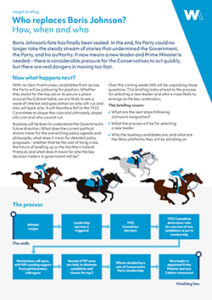The Government’s response this week to the consultation on the future regulatory regime for cryptoassets represents a significant, positive step forward – matching other markets around the world – in establishing a regulatory framework to allow crypto and blockchain to flourish as a driver of growth in the UK fintech sector.
The document released this week set out the Treasury’s plan to implement, following industry feedback, many of the proposals for the future regulatory framework of the sector outlined in April this year. The areas covered by the consultation range from fundamentals like the definition of cryptoassets and the broad legislative approach; to plans to regulate core activities such as custody and lending; and to bring centralised cryptoasset exchanges into the financial services regulatory perimeter for the first time.
What the Government is aiming to do with the proposed framework is manage clear tensions in designing policy that improves consumer outcomes; encourages investment and international competitiveness, all the while protecting against market failure – driven by high profile examples like the collapse of FTX. This is a tricky balance to strike. Heading into an election year, the plan outlined this week still has a number of unresolved questions that will need to be worked through with industry and addressed before implementation.
Lack of clarity on timescales
The Treasury was keen to make clear the consensus that exists across the industry for the plan presented earlier this year – highlighting that nearly 80% of respondents were in ‘broad agreement’ – indeed, many of the proposals set out in the original framework earlier this year were taken forward without any modification. This has seen a number of the issues that were raised by critics unaddressed – for example how crypto gambling will be dealt with under the new regime.
In addition, the document was relatively light on detail in terms of when the critical ‘phase 2’ secondary legislation, that will give the Financial Conduct Authority (FCA) its new powers to regulate the sector, can be expected, nor on the exact mechanisms for how this will be added to the statute. It was confirmed that legislation would be “laid in 2024” subject to Parliamentary time. This timescale, while offering a general idea of when we can expect forward movement, becomes murkier when you consider the political uncertainty (and crucially, the loss of Parliamentary time) that will occur due to the general election expected next year. Given the state of the polls, it certainly makes Labour’s position on the future regulatory framework equally as important as that of the current Government.
Where Labour stand
Speaking of the Opposition: shadow Treasury ministers were keen to stress to businesses at Party Conference last month that they would not be ripping things up and starting afresh with the Treasury’s current proposals for crypto and the wider fintech sector. Some concerns were raised by shadow ministers as to whether proposals go far enough on consumer protections regarding the promotion of cryptoassets – reflecting Labour’s focus on this issue across many policy areas.
As it stands then, the consensus is that the direction of travel on crypto will remain broadly the same. However, should an incoming Labour government, with this added focus on protecting consumers, inherit a half-finished regulatory regime in late 2024, there remains the risk that the checks and balances on firms contained within the proposals could be made more stringent.
Any additional measures placed upon the FCA in the name of consumer protection (on top of the already greatly expanded powers handed to the regulator as part of this plan) would run the risk of overburdening an already-stretched regulator and adversely impact all firms in the space – not just those who are subject to the specific consumer-facing measures that Labour may seek to introduce. This is a risk firms should consider highlighting to the Labour Treasury team as they consult with business on the future of fintech.
Further friction between innovators and traditional players to be expected
From a wider industry perspective, there remains questions around how new and innovative financial products would be prioritised and onboarded into the proposed framework as they emerge. The lack of detail here is critical in terms of how it relates to recent issues such as de-banking of assets, with its highly charged political debate and subsequent scrutiny from the FCA. De-banking is an example of an issue that is known to disproportionately affect cryptoasset businesses – both those in the DeFi space and beyond. Other markets around the world – including the US and the EU with their Markets in Crypto-Assets (MiCA) framework – are making changes that seek to resolve this issue, encouraging growth and cross-sector collaboration. The Treasury’s plan set out this week does not yet address this issue – leaving the door open for suggestions from business to prevent the UK from falling behind its international competitors.
Conclusion
Therefore, while its clear that the measures outlined in the Government response this week are, overall, the right approach, the timeline put forward for when this will become a reality remains somewhat unclear, especially given the uncertain year we are anticipating from a political perspective, and factoring in positive progress in other markets around the world. For fintechs and the wider sector, there is still a significant amount of work to be done in making the case to both the current Government and Labour in advance of the next election for a swiftly implemented and proportionate future regulatory framework.






